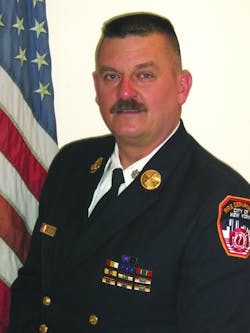So much has been written about the mayday in the American fire service, and like many other tactics and operations, there are a variety of ways to practice, train and define the issue. Let’s take a look at some of the components of the fire service mayday and how they interact with each other.
History
The history of the mayday is quite interesting. The term mayday has been used by the military and maritime industry for decades. It comes from the French word “venez m’aider,” which means “come help me.” The second word—m’aider—is the source of the similarly sounding term mayday. Some people ask why a special word is necessary when we could just use the word help. The answer: Someone could say the word help on a maritime radio and not be calling a mayday.
In the American fire service, the word mayday has become the go-to word used to indicate a life-threatening situation for a firefighter or firefighters on the scene.
Transmitting the mayday
Many fire departments have an official policy that describes when and how to call a mayday. There are several issues to consider when creating or amending a mayday policy. The first is interoperability—yes, the same concept that we often hear folks talking about concerning radios, SCBA and hose thread compatibility. Just like those other important elements of an effective and coordinated fireground operation, your mayday policy should match or mirror the mayday policies of the other departments you respond with or call for mutual aid. A well thought-out mayday policy is useless if half the firefighters on scene don’t understand the terms or procedures being used. Get together with your neighboring departments and hammer out an effective and agreed upon mayday policy.
Another issue is exactly when to call or transmit a mayday. What conditions should cause a firefighter to transmit the word mayday on their portable radio? Some departments have a specific list of conditions such as firefighter down, firefighter lost, member missing or a serious firefighter injury. Those are all valid reasons to call a mayday, but certainly there are other conditions that would qualify as well.
Firefighters should be told to transmit a mayday anytime they are (or another firefighter is) in an immediately life-threatening situation. It could be a firefighter who has fallen through a hole in the floor or a firefighter who becomes trapped by a collapsing wall and is now seriously injured. The specific issue does not matter, only the fact that it—whatever it is—is a threat to the life of a firefighter.
Communications
There are several communications issues that impact the effectiveness of a mayday operation. The first is the actual use of radios. A firefighter who is not wearing a radio inside a burning building can neither transmit nor respond to a mayday. Even if you are assigned to work closely with a radio-equipped member, and you do not have a radio, you cannot use the mayday procedure. Every interior structural firefighter—and those involved in any other operation that could result in serious danger to the firefighter—must be radio-equipped. This is not a recommendation; it is a mandate! Once every firefighter has a radio, the official mayday policy will benefit every member, not just those with a radio.
Another issue that is often discussed and debated is the changing of channels for a mayday operation. Requiring firefighters who are operating inside a burning building to change channels because a mayday has been transmitted is dangerous. First, it is difficult. Trying to switch from one channel to another wearing gloves, in the smoke, with the radio somewhere under the coat or in a pocket, is a difficult and dangerous assignment. It will most likely result in a firefighter or two ending up on the “wrong” channel and not being able to communicate with their crew or command. It also results in the rapid-intervention team (RIT) and the distressed firefighter being isolated on the original tactical channel where they cannot hear what is going on in the rest of the building. It can also prevent firefighters on the newly assigned channel from alerting the responding RIT of changing and dangerous conditions that can develop somewhere within the building. Finally, it prevents firefighters on the new channel from reacting and responding quickly to any problem the RIT may encounter during their rescue assignment. All of the other vital teams on the fireground operate effectively using a single fireground channel, and simply integrating the RIT into that channel provides for a more effective, responsive, unified and safe communications operation.






